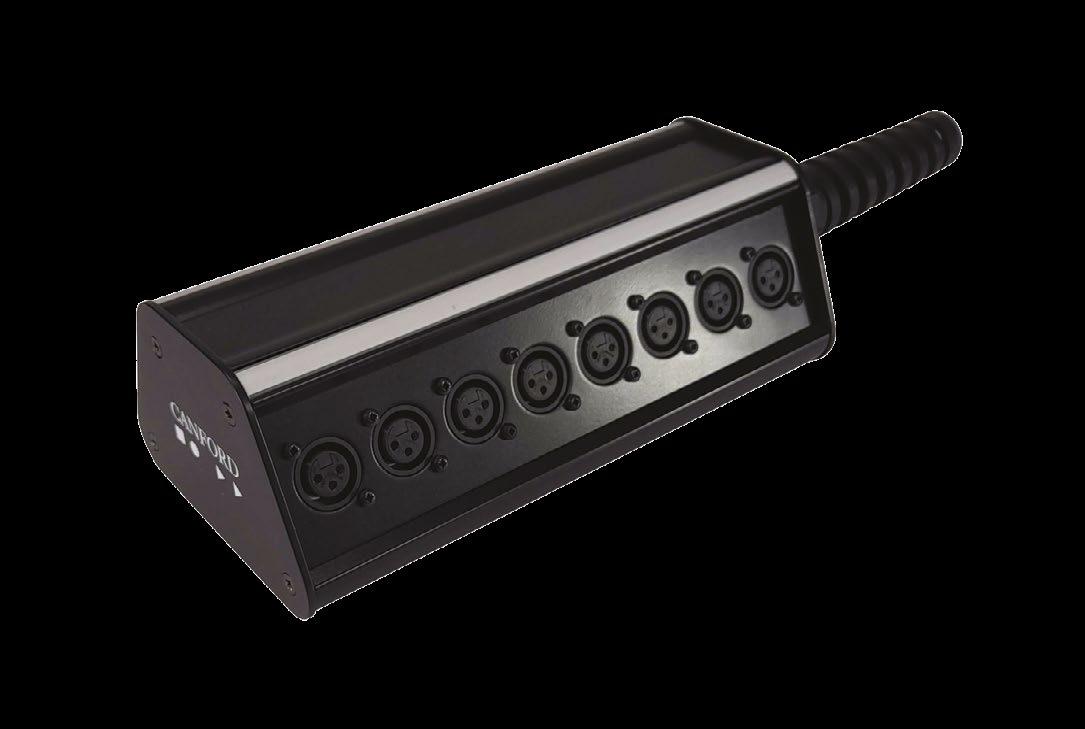
6 minute read
Green-Go V5
GREEN-GO VERSION 5
By Charles Phelps, Canford Technical Support Engineer
Built from the ground up from the success and eventual limitations of version 4, Green-Go version 5 looks set to provide a positive platform for progression of the GreenGo digital intercom brand. What I would consider a thank you to all the keen Green-Go users through the years, the development team have put a lot of effort into renovating its product range. Closely working with their global customer base, providing a vital tool used in a vast array of interesting and unique applications. There is no need for new hardware, Version 5 is FREE, GREEN and backwards compatible with the existing product range. There still may be incentive to invest in potential future hardware that may bring added functionality or alternate workflows, however, Green-Go have made a commitment to full product line support, allowing users to get the most out their Green-Go system and reduce unnecessary Waste Electric and Electronic goods. One software package consolidates all system tools into one neat application, currently there are three main applications: “Green-Go configuration”, “update connection” and “wireless control”. Functionality of the previous software applications has been integrated as tabs into the new software package solution. Bringing everything together has made way for the development of a centralised, customisable dashboard, providing enhanced system motoring tools and opened up configuration access to multiple instances across PC, MAC, Android and IOS. Allowing complete control of your system on the go, and yes, fully password protectable. Where version 4’s software layout was geared towards the “techy” type, Version 5 makes configuration more accessible to a wider audience of users without losing its vast array of configurable settings and functions. Familiar users will find comfort in the table based views in addition to benefiting along with new users alike from the new visual device representations. Configuration components can now be dragged and dropped onto these virtual panels, enabling quick and precise device assignment and channel allocation either live on event or pre-emptively offline prior to or during an event. Alongside a plethora of potential for new functions and features, at its core version 5 provides improved audio. In version 4 the default sample rate is 16 kHz with the option for “enhanced” at 32 kHz at a fixed wired latency of 12ms. Version 5 defaults to 32 kHz with the option for 42/32/16 kHz at a fixed wired latency of 10ms. For the most part perhaps an update that most may overlook, but this paired with extended audio envelope tools such as: compression, limiting and gating, lays the ground work for Green-Go to become a more seamless, consistent and dependable part of any given production workflow. The very popular DECT wireless belt pack solution gets an update; currently belt packs and antennas have four available subscription slots for simultaneous use. This allows up to four belt packs per antenna and up to four antennas per belt pack for extending range (roaming). With the introduction of “pools” users can now expand the coverage of their system further, subscribing up to four belt packs (clients) with up to seven antennas (access points). Manual “over the air” pairing is still available but no longer supports roaming which is now achieved via pool mode programmable in the new control software via Ethernet and USB connection.

Cloud connect service; Eases setup between sites. Bridge interfaces can still function as per version 4 but the new cloud based initiative removes the requirement for local NAT ruling, allowing users to setup and maintain remote site or multisite links more efficiently. Once a Green-Go cloud ID has been appointed (available on request) and devices are linked via a typical internet connection, the cloud handles the rest, also opening up the opportunity for redundancy through multiple device/network links.




From my time so far with the new software, I would describe it as an overall quality of life upgrade. New functions such as “rooms” where we can apply localised audio dimming to negate feedback loops, “Templates” coinciding nicely with Green-Go’s more modular approach to digital intercom, allowing settings to be amended, copied and externally saved. Equipping users with the ability to recall a snapshot of their configuration and upload it to any device in any configuration of their choosing. Even the developments of “flexi-list” amalgamating up to 20 channels into one allocate field, used as a quick access tool for users to re assign one or more of their channels, all makes the solution a much more adaptable and versatile tool. It is clear there has been a conscious observation of the balance between demand and resource, which has led to the genesis of Green-Go Scripting. Offering an approachable format for modification of Green-Go behaviour, providing extended functionality dependant on specific application as opposed or prior to a global firmware revision. Coding new scripts will require an understanding of programming but alongside the developers and other Green-Go users, more bespoke system operation and or functionality is now somewhat in the hands of the users. A bold move, but as a platform for adaptation and bespoke implementation very fitting for the Green-GO brand. In supporting the product range, version 5 gives me confidence. As a compiled software solution including full access to all aspects of system configuration, which is designed as a part of the system rather than an addition or alternative to, permits a cleaner, easier collaboration between engineer and user. Utilising the embedded remote support connection alongside live documentation, providing or implementing new or advanced functionality becomes accessible and reliable, having documentation written and maintained with the manufacturers interpretation of expected implementation. The solution now also includes a user definable “company” default config, which is going to be a very welcomed escape route for a lot of my future testing and programming to come. Getting started with version 5 for the first time may be a seemingly daunting task. However, the fundamentals have not changed and I would encourage starting with the default configuration or generating your first configuration through the quick start wizard. I would suggest it is essential to work side by side with the online documentation, although the majority of improvements are intuitive, for unaccustomed workflows and or new terminology/functionality the manual is an irreplaceable resource. Given this significant update I can foresee Canford putting together some public workshops, providing a buffer and supported space to assist this transition, please voice your interest through greengo@canford.co.uk
At the time of writing this, development is currently in open beta, available for download direct from: https://manual. greengoconnect.com. This dedicated page not only links to the Software and firmware download page but also includes a link to the support forum and documentation. Documents include a live online manual featuring device manuals, software guides, quick start guides and a very useful search function with complementary glossary. Version 5 is not yet suggested for production use but for those interested in getting hands on with the new software.











